|
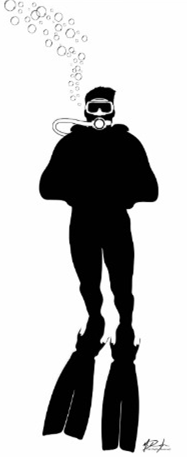

Dive Log
Back to

Back to

|
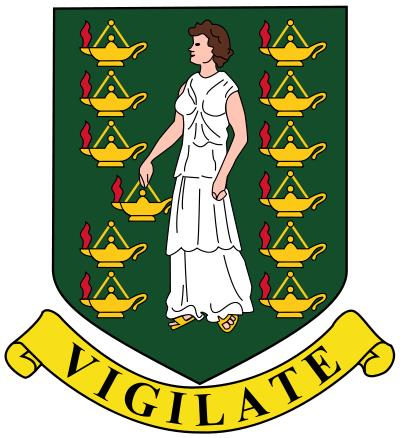
Anegada, British Virgin Islands
June, 1990
It's been nearly six months since our
return from Dominica and I'm just finding time to jot down my
thoughts from one of our favorite dive trips. With school
and work, there just hasn't been time. perhaps it's best
to let memories ferment.
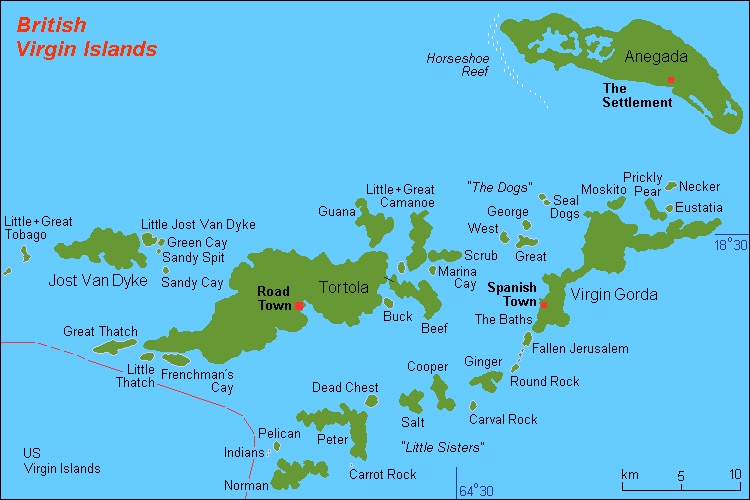
Anegada (Spanish for the Drowned Island)
is the second largest of the British Virgin Islands - a chain of
familiar names like St. John, Virgin Gorda, and Tortola.
The island is about three miles wide, eleven miles long, and has
an elevation of 28 feet. So what was the attraction for
diving? As always, we tried to find a remote island yet
unspoiled by cattle-boat diving operations and the infestation
of tourism. Anegada fit that profile.
We flew out of Omaha for Atlanta on June
18, 1990 arriving at 9:18 AM. From Atlanta we flew to San
Juan then on to Beef Island on a Costa 212-200 that looked like
a shrunken-down version of the Spruce Goose. The tail was
flat where the cargo was loaded. The ventilation was very
poor, the seats were uncomfortable and cramped, but it was only
a 50 minute flight.
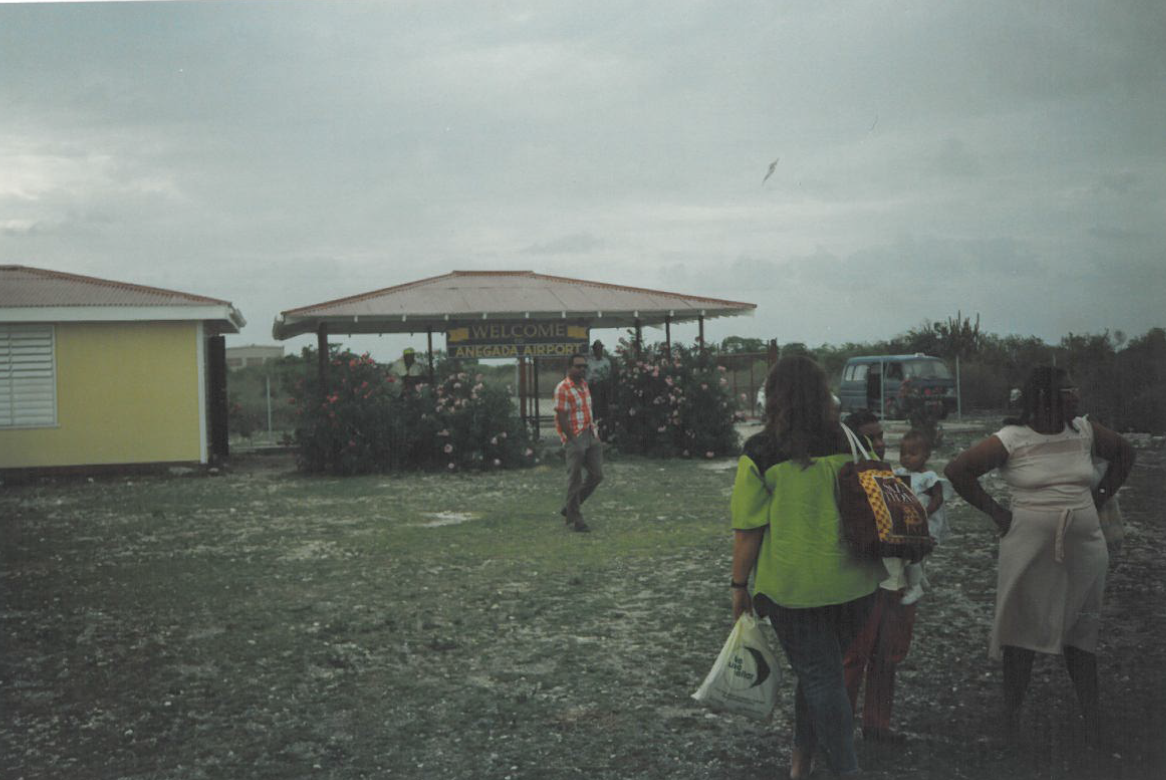
Beef Island is the site of Tortola's
airport. It is said to be named for Queen Elizabeth II who
dedicated it. I'm not sure if that means the queen is
"beefy" or if it was a reference to the "Beefeaters.".
Beef Island is connected to Tortola by means of a two-lane steel
bridge. From the Quonset hut airport on Beef Island, we
flew to Anegada on the same day. The airport on Anegada is
a brick structure of a single room surrounded by a cyclone
fence. When we arrived, we were met by a van whose black
driver would take us to the Anegada Reef Hotel. The ride
was short over a bumpy, rutty, sandy road - but we didn't come
to the island for the drive.
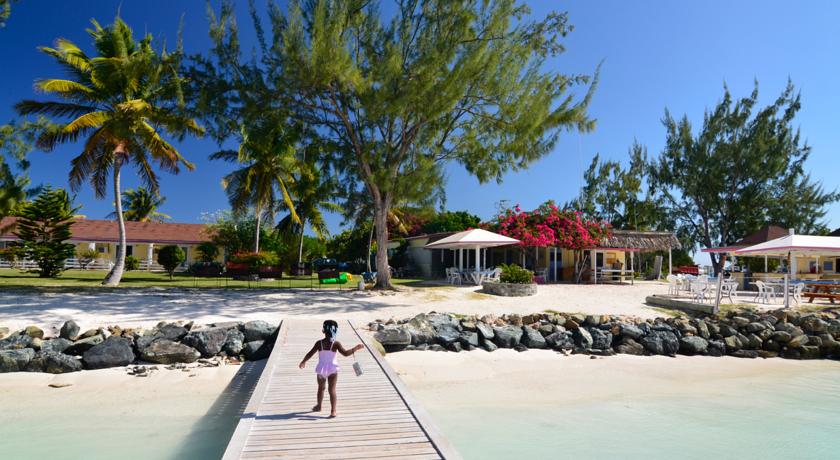
We were met at the hotel by Sue - the
owner - a young woman with blonde hair, heavy British accent,
pleasant manner, and definitely Anglo. Her husband -
Lowell - also had a British accent, was a large man, tall, big
and black. They were a warm and friendly couple.
Lowell had a cold that he blamed on the dive master.
It being nearly 8:30, we chucked our gear
into our room and came back to the dining area for dinner. We
dined on a course of grilled trigger fish, baby lima beans in
butter, marinated red cabbage, sliced potatoes with cheese
sauce, apple pie, and a complimentary rum smoothie - with an
emphasis on the smooth.
Being late, we didn't do much looking
around and there wasn't much looking to do. The rooms were
clean, spacious, and contained only the barest essentials for a
pleasant stay - beds, chest of drawers, toilet, sink, shower,
and air conditioner. The beds were firm and short.
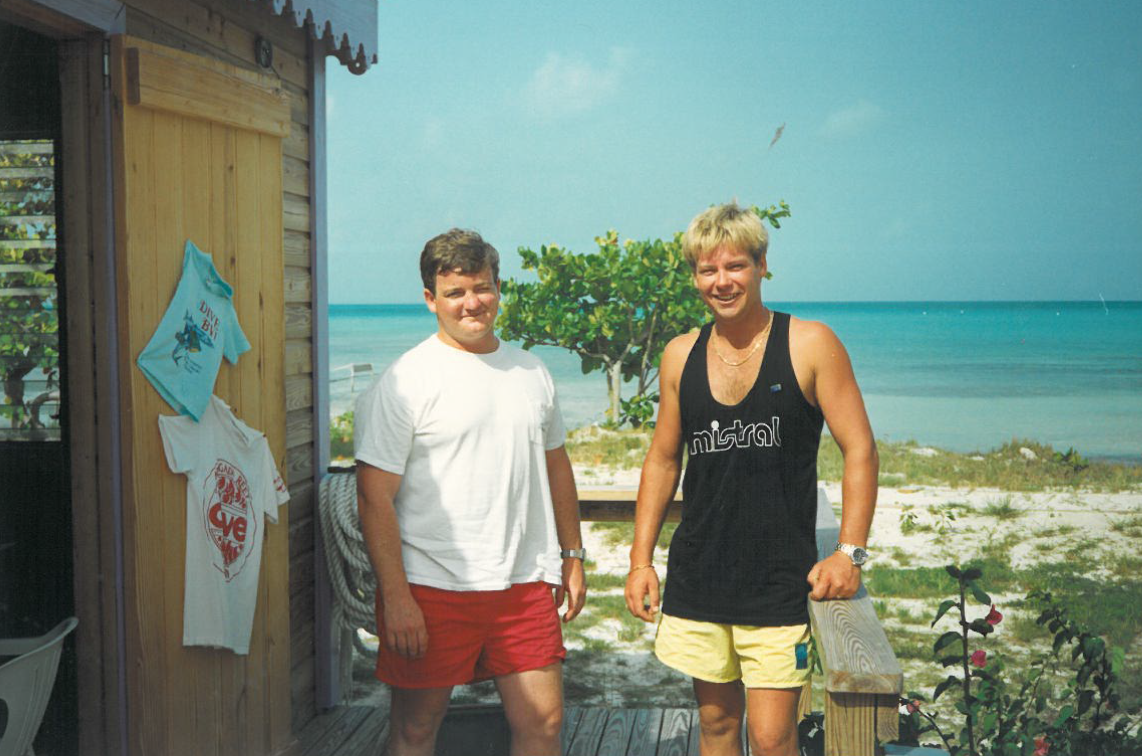 |
We met
our Dive Master at the bar who was also battling a cold.
Paul was of Lithuanian ancestry - short, muscular,
blonde, blue-eyed and very pleasant and professional.
He said that he would meet us in the morning for our
first dive. The next morning we woke to an
overcast day and headed for the dining room for
breakfast. To our mistake, we tried the greasy
fried eggs, sausage, English muffins and coffee.
Not being accustomed to such a heavy meal, it didn't set
too well with either of us. We grabbed our dive
bags and headed to the dive shop next to the gift shop.
Paul met us with a smile and took our gear - which as
the last time we carried it on the trip. Paul
introduced us to a close friend named Chip who was a
dead ringer for a boy I had been in Boy Scouts with
named Bubba. Chip was a Dive Master from Virgin
Gorda and had come over to visit Paul and help with the
dives until Paul's cold broke. |
Our first dive was to be "White House
Reef." Breakfast began to take its toll on the ride.
The diesel smell from the engines combined with the rolling
conditions were too much. We were both sick. Dad
lost his and we decided to head for calmer waters. We
settled on a wreck called the "Rocus" - a bone ship that sank on
New Year's Eve in 1929 with its load of animal bones. The
captain and crew survived, but disgraced, the captain hung
himself - a fact commemorated with a noose swinging from a davit
on the wreck. The air temp was a comfortable 85 with a
water temp around 70. The wreck lay torn apart with
millions of animal bones strewn throughout the sand. It
was a short 43 minute dive with a maximum depth of 50 feet.
The visibility was good and the fish life was active. It
was a unique dive site.
Not wanting to push our sea legs or
stomach again, we decided not to make an afternoon dive.
After a cheeseburger, fries and Pepsi, we lounged in a chair.
The motel had a dozen or so back-to-back rooms. We were
the only guests. There was no beach to speak of, or at
least not one you would lounge on so we soaked up the sun in the
courtyard in front of our room. There was a constant
breeze and no bugs. Next to the rooms was a building with
screened dining, a kitchen, an unscreened dining area, office,
and waiting/reading room. Next to that and conveniently
close was a thatched-roofed bar. The bar was open 24
hours. Guests were asked to keep an account of what they
had a room bills stuck under bungee cords - you were on your
honor. Anyone and everyone tended bar. The rum
smoothies became our favorite. A mixture of tropical
juices, rum, rum, rum, and nutmeg. Three of those and you
were out like a light.
The gift shop was the finest we had seen
on any of the islands. Sue ran the shop and had filled it
with everything you might have forgotten, quality clothing,
snacks, a fine selection of local artisan gifts, and everything
the States-side shops could offer. The dive shop in the
same building was outfitted with more-than-adequate rental
equipment, the usual T-shirts for divers with both humorous and
artful depictions of the wildlife, and a single desk. The
boat was docked at a short walking distance down a sandy path to
the public dock. There was no deep-water port and the
island - being surrounded by a coral reef - had been the final
resting place of many ships. The lack of a deep port was
also the reason for the lack of heavy tourism.
That evening we dined on lamb chops with
mint jelly, corn on the cob, rice, Italian vegetables, and
polished it off with cherry pie with brandied cherries. As
the days wore on, numerous sail boats would come in and anchor
just in front of the hotel. They would dive in the
afternoon, dine there at the hotel at night, and leave sometime
the next day. Their numbers increased as the week went on
and we were to later discover why - the lobsters.
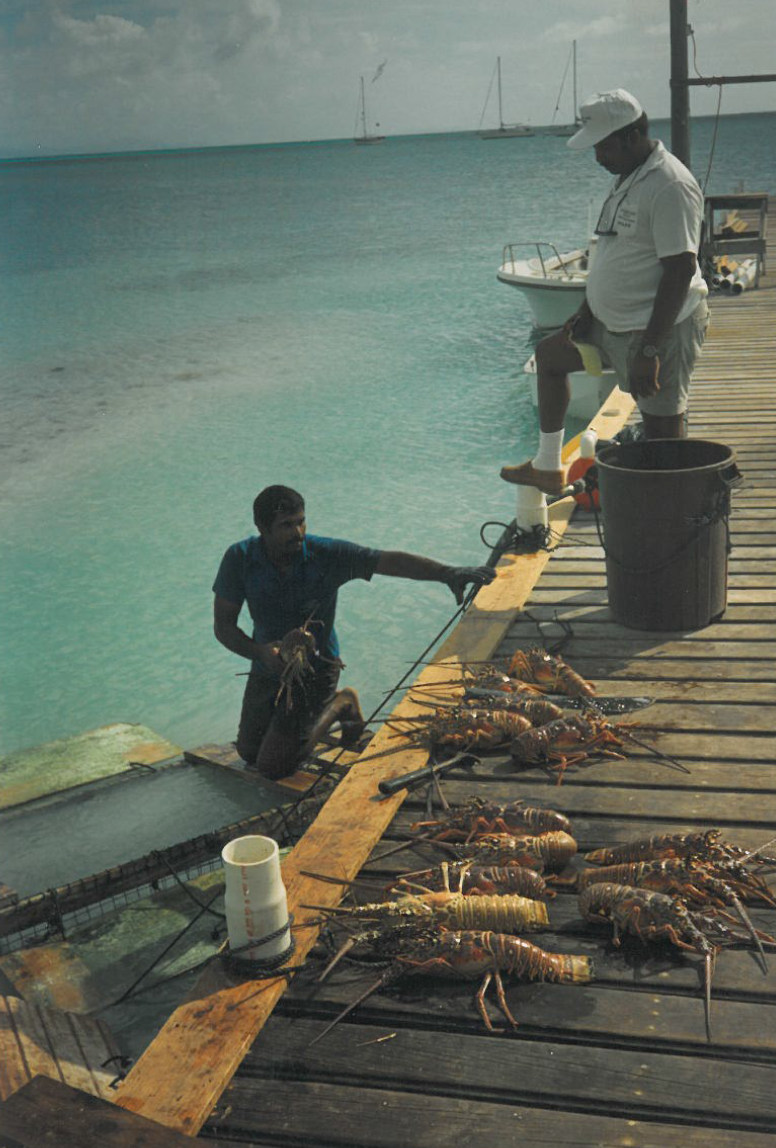 |
I have
never in my life seen lobsters alive, in a tank, in the
ocean, or frozen that were as large as what they served
at the hotel. No wonder every sailboat was
anchoring here. Skippers had to radio in before 3
PM to reserve dinner for that evening. All dinners
were grilled over firewood that had burned to a hot bed
of coals in one of two steel oil drums cut lengthwise
and fashioned with legs and a grate. The taste was
smoky and fabulous. Everything was prepared this
way by Lowell who was the master of the grills. We
began to plan when we were going to have our lobsters.
The next morning we stuck to English
muffins and coffee - a diet that seemed to work - along
with a heavy dose of Dramamine and sinus medication.
We weren't taking any chances. The weather being
partly cloudy and the waters rough, we opted to take an
afternoon beach dive at "Loblolly Bay." Over lunch
we got to know Paul and Chip better. Paul had
lived in the islands for a number of years where he
learned to dive at an early age. Then 23, he was
the Dive Master for Anegada. Paul was a mature 23.
An avid surfer, he said that there is world-class
competition surfing in the BVIs in winter. He kept
his surfboards locked up in the cage with the spare
tanks and air generator. Chip would be leaving the
end of the week to work on a sailing cruise ship "for
rich brat teenagers" - a fact he wasn't looking forward
to.
"Loblolly Bay" was a short ride
from the hotel - everything is a short ride on the
island. The gear was loaded in the worse excuse
for a pickup I have seen. It literally had
swayback. If it had been a horse, it would have
been shot. But it ran. We rode in the
comfort of the hotel van with another couple from one of
the sailboats that had just arrived and would be joining
us for the dive. The beach was what tropical
pictures are made of. Beautiful white sand,
thatched shelters for shade, and a serene aqua blue
ocean. We geared up at the truck and walked to the
water's edge. |
Being lousy snorkelers, I slipped my
regulator in after a few desperate gulps of air. The perk
of this dive was the numerous tunnels and shoots through the
reef that the swells would propel you through. There was a
lovely pair of both French and Queen angels. The fish were
not skittish and you could easily swim along and almost touch
them; almost. The visibility was good despite the swells
and it became a marvelous dive shooting in and out of the
tunnels. On the return trip I also found a treasure - a dollar
bill stuck in the sand.
That evening we had as fine a fillet as
any Nebraska corn-fed beef could produce. Desert that
evening was a parfait of raspberries, bananas, and whipping
cream. Then it was back to the room for a game of
cribbage.
On June 21st the weather cleared and we
prepared to make two boat dives. Typically dives were made
in the morning leaving the afternoon free for whatever.
Our first dive was a return to "Rocus." I don't know how
Paul did it, but with no landmarks to steer by, and with
pinpoint accuracy he weaved the boat between the shallow reefs
that would have torn the hull apart. After being wrecked
on the reef, hurricane Hugo destroyed what was left above the
waterline leaving nothing visible above the weaves. The
current in some areas was excessive and it became a workout to
swim from handhold to handhold. In other areas there was
nor current.
Around noon we had arrived at our second
dive site, "No Name Reef." We offered several names, but
none of them seemed to tickle Paul's fancy. Here were
pinnacles of coral formations much like "Alice in Wonderland."
It was a very fishy reef. Not a lot of any one particular
type of fish, just a nice variety of small reef fish. The
water was clear, warm, with no current to fight giving us a
bottom time of 52 minutes.
Oddly there were no sailboats in front of
the hotel when we returned. We made our ritual trip to the
gift shop to narrow down what we intended to buy for mementos
and a gift for mother before we left. And of course, a
trip to the bar for a couple of smoothies. Dinner that
evening consisted of bar-b-q ribs, potatoes, peas with pickled
pearl onions, cabbage, and pumpkin pie. There was no
nightlife.
The following day was fine and clear.
After our morning muffins, coffee and drugs, we met Paul at the
dive shop to find out what was in store for the day. The
agenda called for two dives on a wreck called the "Chikuzen."
The wreck lay in waters a considerable distance away and would
be a longer boat ride than usual. We were still the only
divers on the boat. We were the only divers on the boat
for the entire week.
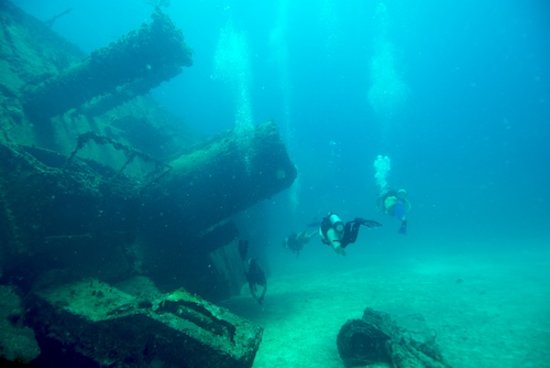 |
The
Chikuzen was a 240 foot Korean freighter laying on her
port side in 75-100 feet of water. A favorite of
all the area island dive operations, Paul expected
company at the dive site. Paul found the wreck
with his usual accuracy and, yes, there was another
cattle-boat dive operations from Virgin Gorda at the
site. Between Paul and Chip, they managed to snag
a buoy and tie off the anchor line. The draw of
the wreck is that is a favorite for large schools of
fish that the divers chum with muscles pulled from the
rusting hull. Our first dive
was to be our deepest at 75 feet at which we were to
fully scout the vessel. The other divers were just
leaving the site when we entered. We swam the
length of the freighter, awed at the size of the anchor
chains and the ship's screws. The closer we got to
the surface, the stronger the current and we could just
drift along the wreck and look into every port hole. |
Our second dive was a shallower 50 feet.
By this time some of the larger fish were returning to the
wreck. Paul fed a large gray angel by holding a piece of
muscle in his teeth. An immense school of spade fish
leisurely swam by. We spotted a large sting ray - tru
grace in motion. There were millions and millions of fish
in large schools all around the wreck.
It was a long and relaxing trip back to
the dock where Paul would drop us off. We would take our
regulators and whatever small articles we brought on board.
Everything else Paul and Chip carried back to the dive shop.
We lunched that day on honey-stung chicken - a half chicken
breaded and deep fried. We made arrangements with Susan
for a tour of the island. At mid afternoon a van pulled up
to take us on our tour. Our driver's name was Sidney and
he seemed well versed on the history of the island. We
asked Sidney to take us into town. Talk about a small
island, the town didn't even have a name; it was merely called
"the settlement." The settlement used to be at the west
end of the island, but during an earlier century when slave
ships were prone to sneaking up on the inhabitants, the natives
resettled to the east end where ships could be more easily
sighted.
The office of Governor was shared by
Anegada and Virgin Gorda and he lived on Tortola. They had
the same Governor for the past seven years. Seeing that an
election year was approaching, a road paving project was just
beginning on Anegada. They had also began construction of
what was to become the Government House. Typical of the
islands,, it was made of steel, wood and concrete with a plain
design. Being more than just one story tall, it was
already the tallest structure as well as being on the highest
point of land. Other houses were of wood and corrugated
steel roof occasionally decorated with gingerbread seen on other
British-influenced islands. Nonetheless, the lifestyle for
the majority of islanders was poverty. The majority of the
male population were fishermen. We found it odd that many
years ago the predominant crop on the island was corn.
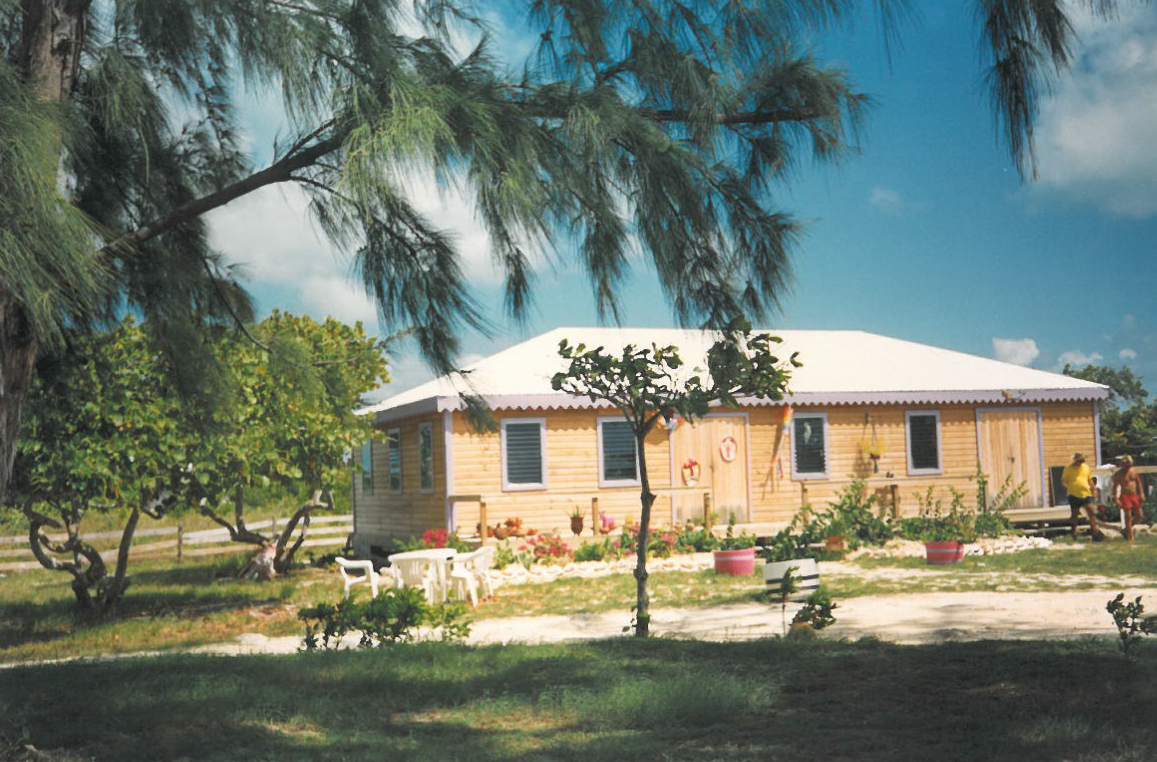
There were two churches on the island and
one school with five teachers and 35 students. The grave
yards, as on most islands, was above ground. This was
definitely one of the shortest island tours we had or would ever
make. So back to the hotel and a cool drink before dinner
- which was usually around 7 PM. That evening we had
grilled trigger fish, brown rice, broccoli, and cauliflower,
finishing with a tasty key lime pie. Then it was back to
the room for a few hands of cards, reading, writing, and sleep.
The next day we began our dive at a reef
with no name on the east end of the island. A truly
beautiful reef. it had the largest stand of elk horn and
stag horn coral we had ever seen. It was a particularly
clean reef with lovely sea fans and eerie formations of coral.
Paul managed to catch a small hawks-bill turtle while it was
sleeping and it endured our petting it for only so long before
it wanted loose. We were later to catch up with the very
same turtle later snoozing under another formation. The
reef was very fishy with large numbers of parrot fish.
Our second dive that day was memorable.
Being surrounded by a reef, Anegada has become the graveyard for
ships of all nations, from all centuries, and Dad and I had
never done a lot of wreck diving. In the 1750s, a French
pirate ship accidentally set itself on fire while trying to lure
another ship to the reef. The "Rosenbloom" had the habit
of feigning fire while safely anchored, luring ships to their
fate on the reef. But on this occasion, the fire got out
of control and the ship became its own victim and burned to the
waterline. The remains sit in 35 feet of water protected
by the government as a historic site. It was breathtaking
to step back more than 200 years to see the overgrown capstan
sitting in the sand. Paul said that it was not uncommon to
find musket balls and other ship artifacts. The timbers
were strewn in no specific order across the sands. I was
amazed that there were any wood beams left at all. Most
were charred black and would crumple on touch.
While waiting for dinner we amused
ourselves by watching Paul fish for shark off the end of the
hotel's dock using nothing more that a hand line. He did
manage to catch a small shark which he released. That
evening I had lamb and Dad had a steak. Corn on the cob,
red cabbage, potato salad, and pumpkin cheesecake rounded off
the meal. Tomorrow we would dine on lobster.
The last day of diving is always
depressing and I suspect that knowing this most Dive Masters
save their best till the last. Our first dive of the day
was near a barge that had been run up on the reef by the Coast
Guard for attempting to smuggle cocaine. Its rusting hull
is easily visible. The site had no name. The area
was blanketed with elk horn formations, mostly dead, but
creating an unusual underwater sculpture. Debris from
other wrecks littered the floor and have been quickly inhabited
by aquatic denizens.
Close by, our second dive was at the site
of a proposed underwater hotel. It was a beautiful reef
and undoubtedly would have made an ideal site for the hotel.
At the time, they were having design problems. I picked up
an immense rooster tail conch and saw my first immature French
angel - with bands of black in gold, it in no way resembled the
adult. On the final ascent we say a large spotted eagle
ray that to seemed to be waiving goodbye. A beautiful
ending to excellent diving.
After lunch we decided to walk the beach
from the hotel to Pomato Point. It was easy walking and we
leisurely made our way toward the west end of the island.
We saw the usual litter of a disposable society that drifted its
way to paradise. We passed by several large homes of
people obviously not too poorly off; one had its own gazebo and
entrance flaked by an old sea anchor.
Pomato Point beach was lovely but the
waters from the Atlantic were a bit cooler and our stay was
short. We walked back to the hotel a little slower knowing
that this would have to do for another year. We bought our
polo shirts with Anegada embroidered on the pocket, and a piece
of carved coral in the shape of a cattle egret (which were
predominant on the island) for Mother. That evening, our
final meal was lobster. It was well worth the wait, with a
complimentary glass of wine, brown rice, carrots, beans, and
pecan pie for desert.
Our flight our of Anegada was to be first
thing in the morning, but Paul insisted we meet him at the shop
before we elave. After a light breakfast, we met Paul at
the shop to convey our sincere thanks and best wishes. It
was tradition - for us at least - to tip the Dive Master at the
end of every trip. Paul was one of the finest Dive Masters
we have ever met.
We flew out in the reverse order that we
flew in, but the approach to Beef Island was a rough ride.
The pilot had to fly near one mountain, then turn sharply and
drop fast. From the airport, we were taxied to the
Treasure Island Hotel on Tortola. Tortola was a prime
example of paradise spoiled. What must have once been a
jewel in the British colonial island crown was now a busy,
noisy, smelly, crowded rock. From our hotel room, we could
see the marina brisling like a porcupine with sailboat masts.
The water was impossible to drink so we went to the bar and paid
four dollars for two small glasses of Coke.
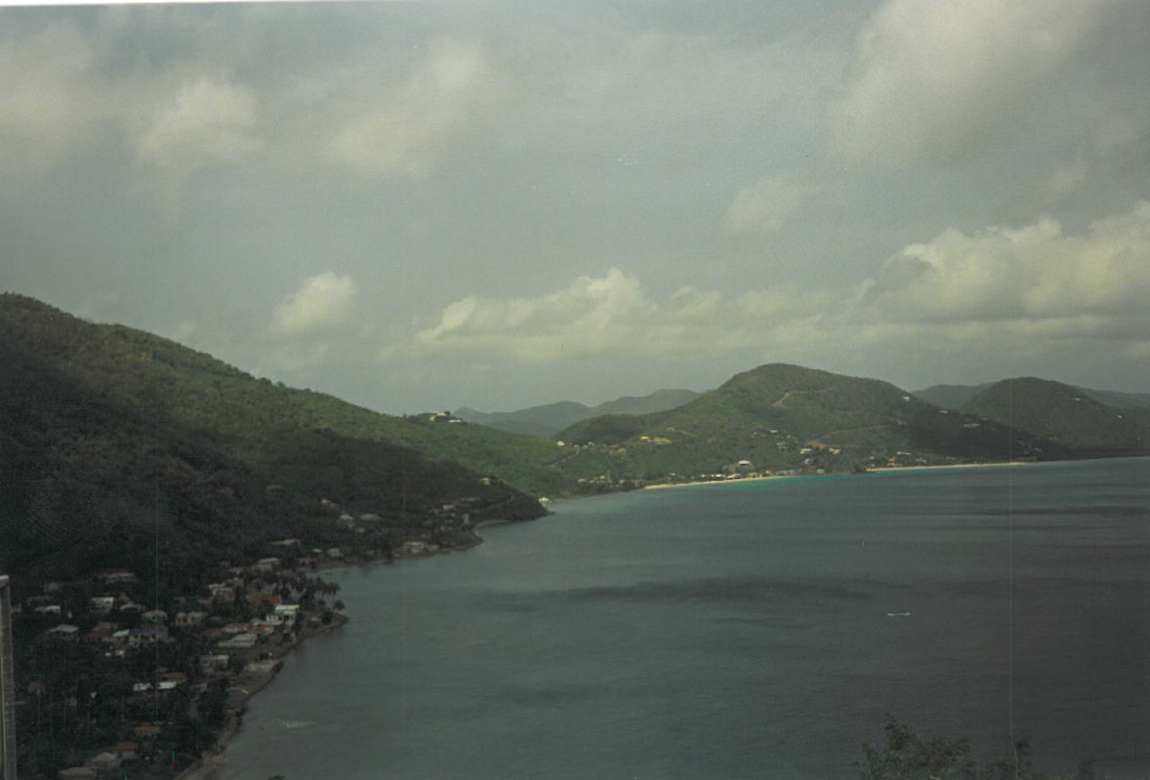
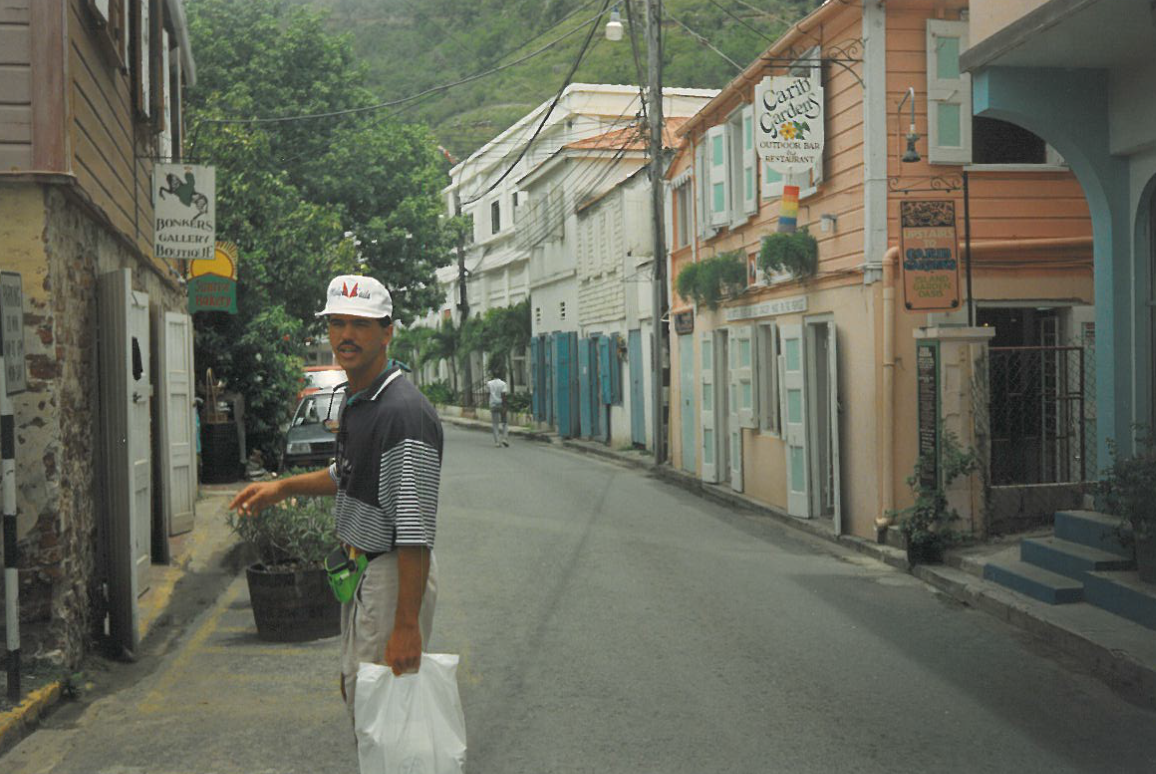
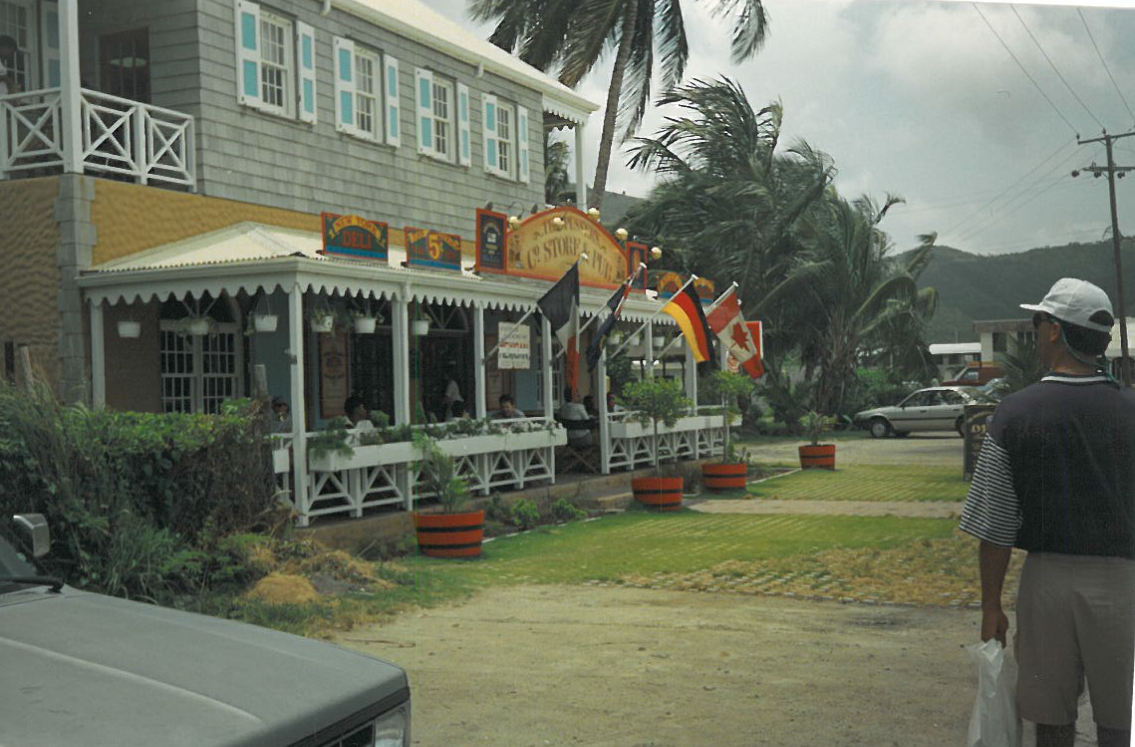 |
It
being still early in the morning we checked at the front
desk for the possibility of an island tour. A taxi
rolled up to the carport and off we went. Our
black guide was difficult to understand but we headed
towards Beef Island along a road running next to the Sir
Francis Drake Channel. Ruins of ancient stone
fortifications built by the Dutch in the 18th Century
are now overgrown with vines and memories.
Our taxi began to climb its way up
the road towards one of the highest peaks on the island
where a restaurant and bar offer a fantastic but
blustery view. There was also a small observatory
built by the local scientific community on the same
site. The road skilled the ops of the mountains
until we descended to the beach cove area of Cane Garden
Bay. A lovely beach area obviously catering to the
wealthy with its row upon row of lounge chairs.
The bars were quiet at that time and the shops were
nothing to comment on.. We continued on to the
west end of Tortola and Frenchman's Cay where slaves
would swim to freedom across the channel from St. John's
We asked the driver to drop us off
at Pussers where we planned to have lunch. In the
heart of Road Town there is a truly unique shop - a
must-see in Tortola. The Pussers Company Story and
Pub (bottom picture) is the epitome of British colonial
old-world charm. The two story building is
brightly painted and decorated with all sorts of
gingerbread and fretwork. Walking into the store
walks you into what I had always imagined an English pub
to look like. Dar, with Victorian brass, leaded
glass windows, heavy woodwork, and old prints.
Seating ourselves at a booth, I ordered the seafood pita
and Dad ordered the shepherd's pie. We both
started with the infamous Pusser's Pain Killer - rum,
cream de cocoa, spices, and who knows what else.
After lunch we walked through the
bar into the store. The building was decorated
with nautical memorabilia of unbelievable value. A
beam from HMS Victory was encased in glass.
original oil paintings depicting famous naval battles of
the 18th Century were everywhere. The clothing and
gifts in the Company Store were of the highest quality
and reasonably priced. I bought two bottles of rum
for friends and a small flask for myself. It's my
understanding that Pusser's is still stored in wood
casks onboard British ships gently rocking to age.
A portion of the sale proceeds support the British
Sailors Home. I wasn't aware that rum was made
from sugar cane which explains the large number of cane
mills throughout the islands.
We left to try and find coinage
with the British Virgin Islands seal. The bank
down the street didn't have anything but gave us
directions to the ministry of finance. We walked
up a couple flights of stairs in a concrete building,
down a hallway, and through a door. We were
introduced to the Minister of Finance, a striking black
woman who explained that they were in the process of
having Franklin Mint coin a tourist medal but that it
was not to be completed for several months. |
One of the more unique sites we visited
was the Joseph Reynold O'Neal Botanical Gardens. The
gardens occupy a historic site near the Government Schools in
the center of Road Town and cover just under four acres.
The gardens were began in 1902 when Henry Steel was appointed by
the King to create a botanical station on Tortola. He was
followed two years later by W.C. Fisclock. In 1970 a group
of islanders including J.R. O'Neil began what was to be the
gardens as they were when we visited. The gardens were
dedicated in 1985 and consisted of rare and beautiful as well as
native plans of all forms. The stone ruins of Fisclock's
original residence are just inside the gates. When
hurricane Hugo swept through the islands in 1989, the gardens
were especially hard hit.
It being too hot and too far to walk back
to our hotel, we hailed a taxi and returned to our room to watch
the sun set over the harbor. We dined in the restaurant
veranda. While the atmosphere and setting were more
formal, the food was no better than our meals on Anegada.
The next morning we had an early flight
and planned to be at the airport an hour ahead of scheduled
departure. We left Beef Island and the British Virgin
Islands on June 26th and were in San Juan in half an hour.
We had a four-hour layover in Atlanta; we snoozed and visited
the airport gift shops.
Anegada was a treasure of dive trip.
The diving was excellent, the people friendly, the scenery
serene, and the dining delightful. I hope that like so
many of the neighboring islands it doesn't become spoiled with
heavy tourism.
Back to

Back to

|